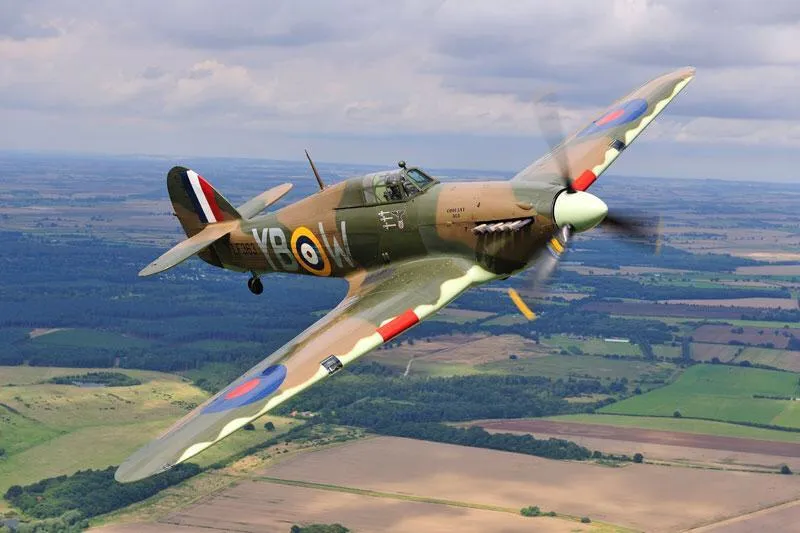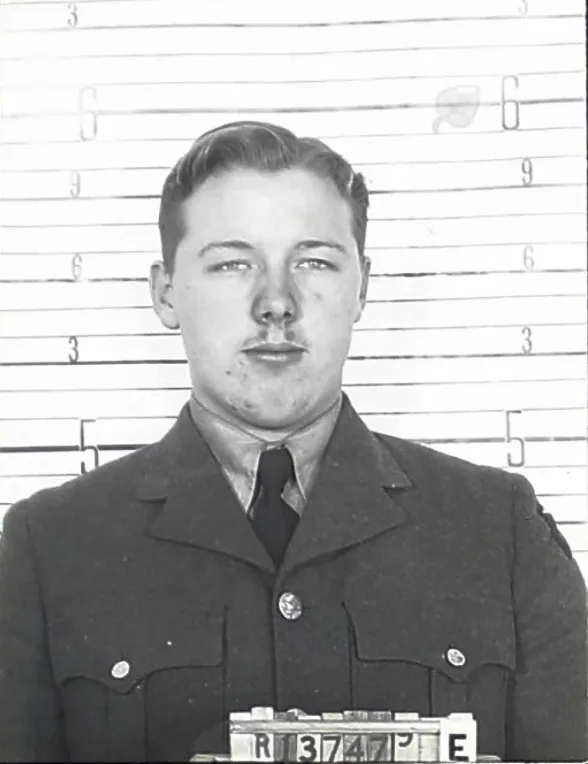Hawker Hurricane

Source BBMF
The Hawker Hurricane is a single-seat fighter aircraft of the 1930s"“1940s that was designed and predominantly built by Hawker Aircraft Ltd. for service with the Royal Air Force (RAF). The Hurricane developed through several versions, as bomber-interceptors, fighter-bombers, and ground support aircraft in addition to fighters. Versions designed for the Navy were popularly known as the Sea Hurricane, with modifications enabling their operation from ships. Some were converted to be used as catapult-launched convoy escorts. By the end of production in July 1944, 14,487 Hurricanes had been completed in Britain and Canada.
A major manufacturer of the Hurricane was Canadian Car and Foundry at their factory in Fort William (now Thunder Bay), Ontario. The facility's chief engineer, Elsie MacGill, became known as the "Queen of the Hurricanes". The initiative was commercially led rather than governmentally, but was endorsed by the British government; Hawker, having recognized that a major conflict was all but inevitable after the Munich Crisis of 1938, drew up preliminary plans to expand Hurricane production via a new factory in Canada. Under this plan, samples, pattern aircraft, and a complete set of design documents stored on microfilm, were shipped to Canada; the RCAF ordered 20 Hurricanes to equip one fighter squadron and two more were supplied to Canadian Car and Foundry as pattern aircraft but one probably did not arrive. The first Hurricane built at Canadian Car and Foundry was officially produced in February 1940. As a result, Canadian-built Hurricanes were shipped to Britain to participate in events such as the Battle of Britain. Canadian Car and Foundry (CCF) was responsible for the production of 1,451 Hurricanes. Wikipedia and Harold A Skaarup Web Page
 Hurricane - Kestrel Publications
Hurricane - Kestrel Publications
CASPIR Aircraft Groups:
RCAF On Strength (454), RCAF 400 Squadron (1), Canadian Aircraft Losses (358)Hurricane Mk. XII 5387
 D
D
Delivered to stored reserve with No. 4 Training Command. Issued to No. 133 (F) Squadron at Lethbridge, Alberta on 3 July 1942. Still with this unit when it transferred to Western Air Command and moved to RCAF Station Boundary Bay, BC on 26 October 1942. Coded "FN*D". The a/c was on a formation training flight (as No. 3 in the flight) when, 30 mins after take-off, it suddenly broke away from the formation without warning and dove into ground 1/2 mi east of Boundary Bay on 15 Apr 1943, and was totally destroyed. Flight Sergeant (USA) E.E. Grissom was killed. Carbon monoxide poisoning was suspected as a possible cause
1942-06-23 Taken on Strength 2019-08-20
1943-April-15 Accident: 133 Squadron Loc: Aerodrome Names: Grissom
1943-04-19 Struck off Strength Struck off, reduced to spares and produce 2019-08-20





 Canadian Virtual War Memorial
Canadian Virtual War Memorial Commonwealth War Graves Commission
Commonwealth War Graves Commission Library and Archives Canada Service Files (may not exist)
Library and Archives Canada Service Files (may not exist) Lake Charles, Louisiana, USA
Lake Charles, Louisiana, USA Hurricane
Hurricane Wikipedia Hurricane
Wikipedia Hurricane Harold A Skaarup Web Page
Harold A Skaarup Web Page